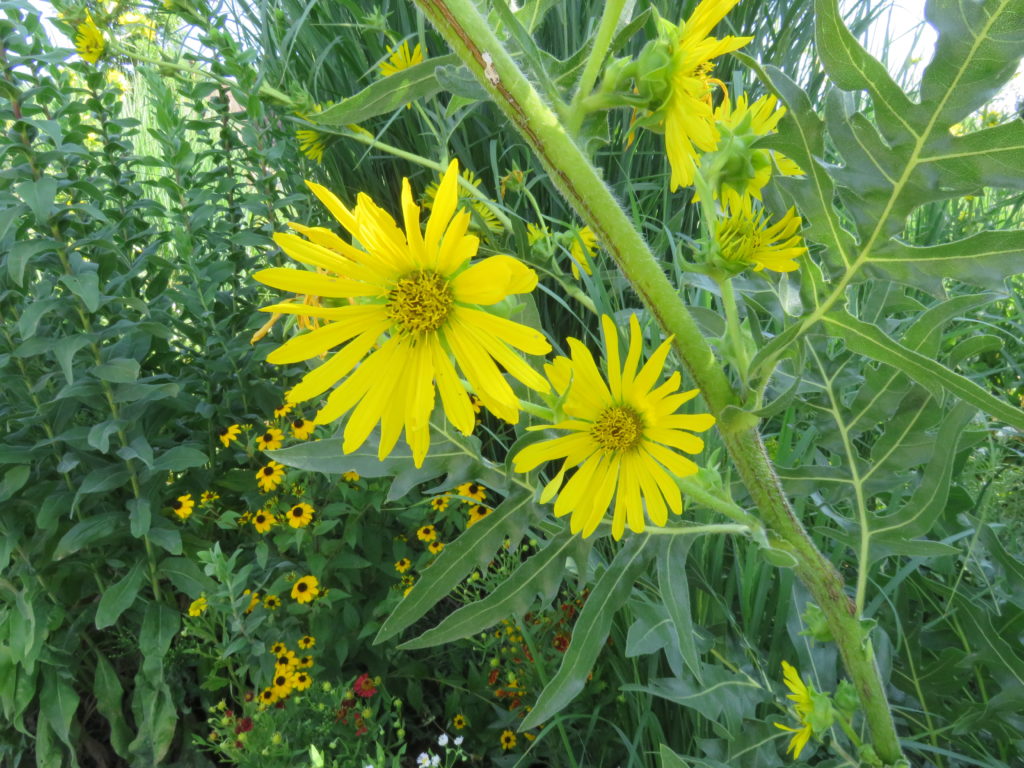Compass Plant (Silphium laciniatum) are impressive prairie plants that look like – but are not – sunflowers. Native to the central U.S. (USDA hardiness zones 3 to 8), these sturdy prairie giants grow upwards of 5-8 feet in height (1.5 – 3 feet wide) on stiff, hairy, resinous stems. The group (Silphiums) are also called “rosinweed” because split or broken stems exude a gummy rosin (resin).

Their sunflower-like flowers measure 4-5 inches in width with yellow rays and yellow center disks. Flowers bloom in loose spikes on the upper parts of the plant in summer. Leaves are very large and deeply cut. The bottom (basal) leaves measure upwards of 18 inches in length. Basal leaves usually orient themselves on a north-south axis so as to minimize intense overhead sun exposure, thus giving rise to the common name.
The upper leaves are a lot smaller.

Compass plant is easily grown in average, medium moist, well-drained soils in full sun. This prairie giant tolerates poor soils and asks for little or no care. In partial shade, staking plants may be necessary.
No serious insect or disease problems trouble compass plant. Plants from seed may be slow to establish and may not flower until the second or third year. Flowers attract butterflies, bees, and other pollinators. Don’t be in a hurry to cutback plants in the winter as birds perch upon the stems of these architectural giants.
Because of their enormous height, compass plants are best sited in the rear of a flower border where they should prosper over many years. They make excellent additions to a prairie or wildflower gardens.
Prairie species like compass plants are rarely sold at local garden centers. Mail order seed companies like American Meadow, Inc. are your best place to shop.

 Posted in
Posted in 
